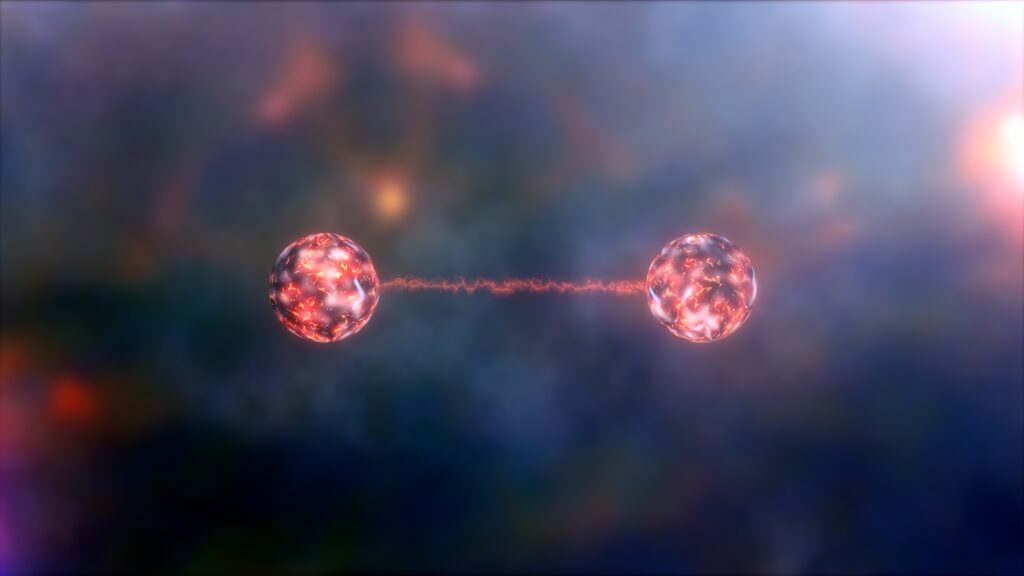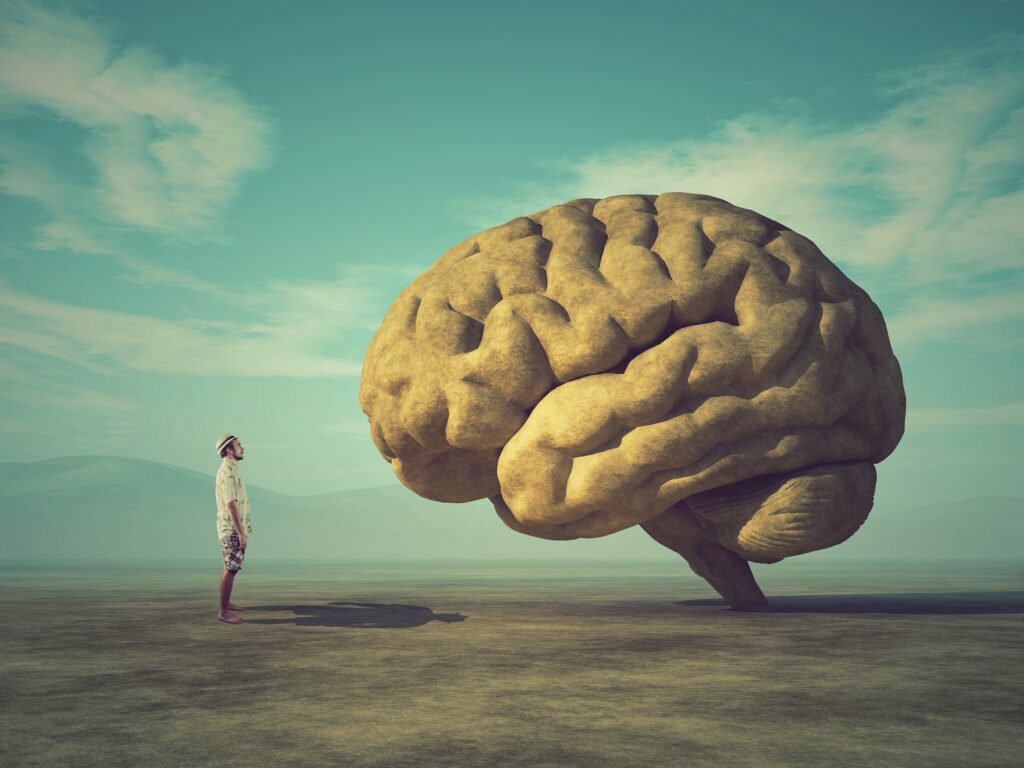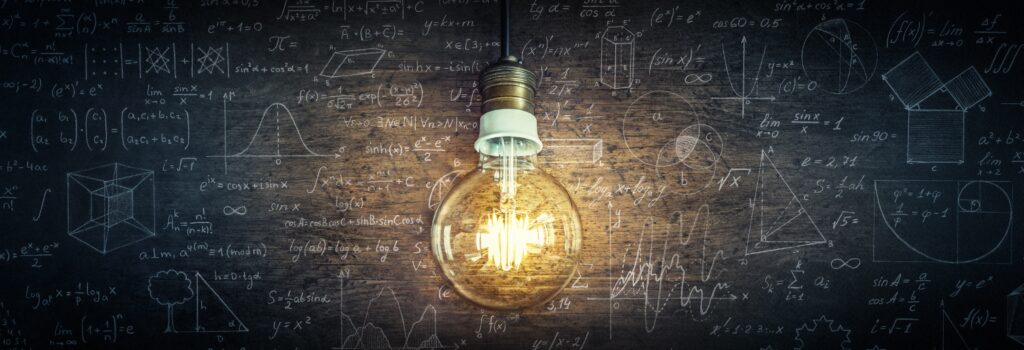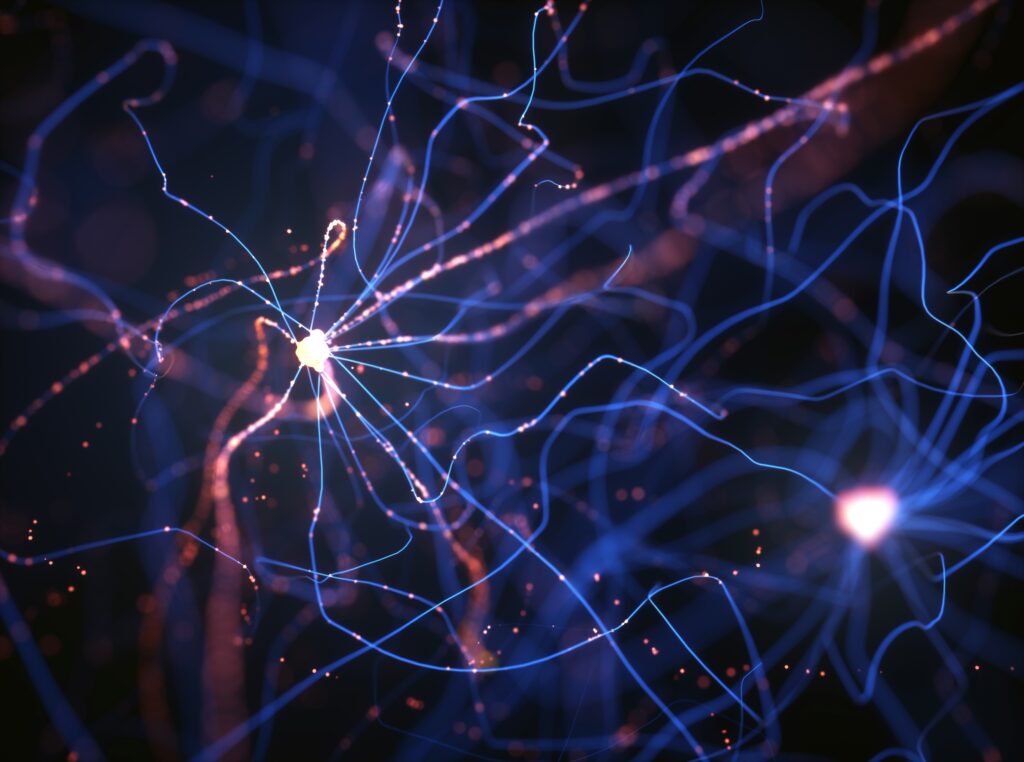Can a physicist embrace idealism?
Reading | Physics
![]() Claus Metzner, PhD | 2021-03-15
Claus Metzner, PhD | 2021-03-15
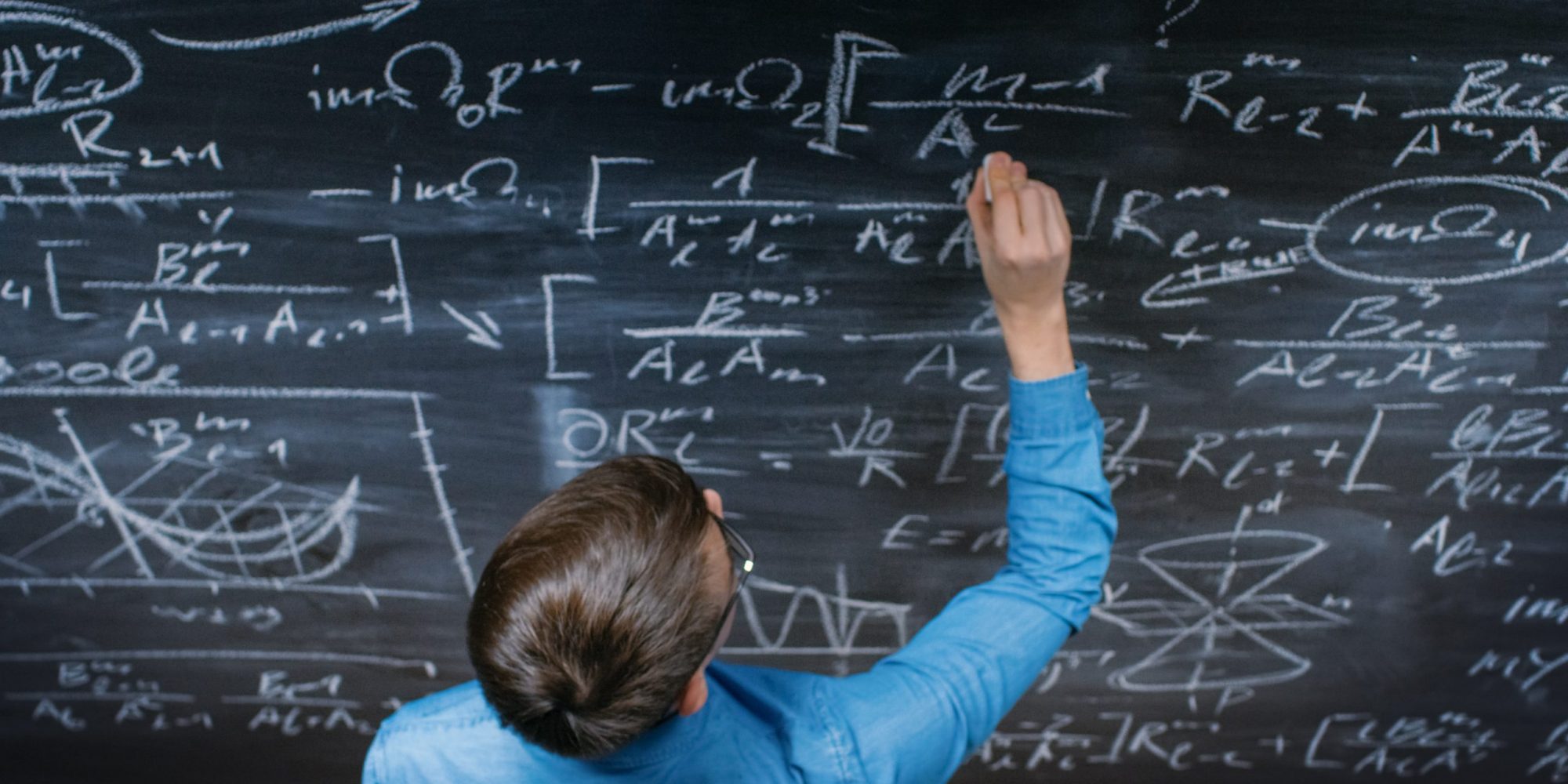
Is science in general, and physics in particular, compatible with a consciousness-only worldview in which matter is merely an appearance of extended mental processes underlying all nature? Physicist Dr. Claus Metzner doesn’t see why they shouldn’t.
Pick a random member of the natural science community and ask her if she ever seriously considered the possibility that our life could be a shared dream. Chances are very high that you will receive an emphatic statement about the obvious reality of the ‘world out there,’ about its existence independent from mind, and about the enormous success of science in explaining how this objective reality actually functions. Indeed, the vast majority of researchers working in fields like physics, astronomy, chemistry, earth and life sciences are materialists, and they rarely question this worldview.
Try and ask the follow-up question whether the world that we see is the very same reality which science is investigating. Her answer may be something along those lines: “Basically yes. Of course, our eyes can only see a small part of the electromagnetic spectrum. There is more ‘out there’ which humans cannot sense without technical equipment. But basically, yes, what we see is the reality.”
You may then challenge her with the fact that the photons coming from ‘out there’ are absorbed in the retina, and from this point on there are only electrical spike trains traveling inside her dark skull, so that the light she experiences cannot be the light ‘out there’. She may now admit that our subjective experience is a virtual reality show, but at the same time, she will probably insist that this show is created by our evolutionarily optimized brain in a way that faithfully represents the true world around us, because otherwise we could not survive.
At this point of the discussion, you could argue that precisely because evolution wants us to survive, it will not show us the world as it really is, but rather a mental ‘desktop’ of dumped-down, fitness-oriented ‘icons’ that stimulate us to act in the right way.2
But instead of this argument, I recommend a little ‘objectivization exercise’. Its goal is to strip away, step by step, all subjectivity from our inner virtual reality, until only that remains which is truly out there. So, you first ask her to please remove all colors from her inner movie, since colors are pure qualia, not part of objective reality. This leaves her with a series of mental black-and-white images. The next step is to remove also all local differences of brightness from those mental images, since the electro-magnetic field distribution in objective reality has no brightness unless a conscious being is observing them. This last step is probably surprising for her, since now there are not even images left: No more objects with boundaries, arranged in three-dimensional space, nothing visual anymore. You continue to take away from her the subjective experiences of hearing, touching, smelling, and so on, until she is left in a complete void. After this procedure, she may finally be willing to admit that reality beyond our personal consciousness is, at best, something like pure information.
As a working model, let us imagine objective reality as a huge array of numbers, an abstract ‘matrix’ that holds the momentary state of the universe. Something like this information matrix has to exist, because otherwise we could not easily account for the fact that the world is so persistent and that other people seem to live in the same environment as we do. All our individual virtual reality shows must be ‘rendered’ from this universal, shared information matrix, even though certain details of the rendering are relative to the observer. Reversely, we can affect the state of the matrix by acting within our private reality shows. Moreover, the matrix is also updating its values independently from us, following the rules of nature (so that the moon will appear at the expected place tomorrow). The task of basic science is to figure out the update rules of this information matrix.
I have been working for more than three decades as a theoretical physicist in the diverse fields of quantum nanostructures, biophysics and brain-inspired neurophysics. The information matrix, conventionally called matter, is important to me, as I am one of those who make a living from investigating its update rules. But at the same time, I am keenly aware that conscious experience is the only phenomenon that I know to exist without any doubt, whereas the information matrix and its rules are merely an inference to explain the regularities of our experience. After all, we will never have any direct contact with the information matrix, as its states can only be read or modified through events within subjective experience: When a scientist is turning the control knob of a light source to set another intensity and then reads up the resulting change of photocurrent from a measurement instrument, these are mental events in her consciousness. In the same way, when she is later sitting in her office, staring at a plot of her measured data and thinking about how to get it published, these are all mental events in consciousness. And over time, as a collective result of many such individual mental events, a shared worldview is emerging, the great narrative of science, which is helping us to thrive in our mental universe.
Probably, most of us will agree (at least after some work of philosophical persuasion) that the activity of science is experienced entirely within consciousness. But at the same time, most of us will not care too much, because as long as the information matrix exists, reliably and objectively, outside of consciousness, science can proceed as usual. As long as mind-independent matter is granted, even in a completely abstract form, scientists can continue to do their beloved job and make a living from it.
For many years, I was doing science with this kind of dualistic mind set, in which both consciousness and ‘matter/information’ coexisted peacefully. I knew that both are required to explain what I experience, but I did not worry too much which of them is fundamental and which derived from the other. However, at some point, the possibility that consciousness may emerge from matter by some yet unexplainable miracle just stopped to be a reasonable option for me, once and for all. In my opinion, the insight that the ‘hard problem of consciousness’ is not just an ordinary problem, waiting to be solved, but simply a category mistake, is a key moment in everyone’s intellectual development. This key insight left my philosophically untrained mind with two basic options: It could be that both consciousness and the information matrix are fundamental and exist independently, which however still left the question unanswered how the two distinct categories can interact. Alternatively, only consciousness might exist, which would imply that life is indeed similar to a dream. It would however have to be a shared multi-subject dream with persistent regularities that are hard to explain without the grounding information matrix.
I did not take the latter option very seriously, until I came across some modern versions of idealistic philosophy, in particular the analytic idealism of Bernardo Kastrup. In a series of books,1 written with outstanding clarity, Kastrup is using philosophical and scientific arguments to make an amazing point: Fundamentally, there is only ‘universal consciousness,’ and sentient beings are ‘dissociated alters’ of this universal consciousness, comparable to whirlpools in an ocean. There is ongoing mental activity within universal consciousness. Whenever this activity impinges upon an alter, this is subjectively experienced as ‘matter’: an ‘image on the alter’s screen of perception.’
I resonated intuitively with this ‘consciousness only’ philosophy and found Kastrup’s arguments rationally convincing. So I gave it a try and lived and worked, for a few months now, as an idealist physicist.
I started with the hope that daily life, and even the practice of science, need not change at all under idealism. And to a large extent this proved to be true: the morning after you convert to idealism, the world looks exactly the same as ever. You are still free to live in the wonderful illusion of a material world with colorful objects arranged in space, together with all those other sentient beings, and you can act in this familiar world, trying to make it a better place. Also, you can be assured that our established scientific knowledge will still be valid and enable our technology.
However, I also noticed a certain fear creeping up from time to time: If the universe ‘out there’ is nothing but consciousness, a purely mental space with evolving contents, and matter is how these transpersonal mental contents look like from the perspective of our individual minds, then all natural sciences, including physics, are merely studying the (presumably imperfect) images of these mental processes. So far, the objective data that has been extracted from such images during the history of science has revealed an enormous amount of comprehensible structure and regularity. But who guarantees that the mental processes in transpersonal consciousness will not suddenly take another course, making all our scientific insights obsolete? After all, are mental processes not something quite unrealiable and irregular, as our nightly dreams seem to suggest?
Kastrup answers this question by pointing to the measurable neural correlates of a subject’s conscious experience, which are images of mental processes as well, viewed from across the dissociative boundaries of an alter. The global activity patterns in a conscious brain, observed over sufficiently long time periods, may indeed change dramatically, directly reflecting the dynamics of mental processes. But when the observation is restricted to a sufficiently small local area, and to a sufficiently short time window, the measured local brain activity will appear more static and predictable. Humans may face a similar situation when they analyze the material universe: the images (matter configurations) that we see around us may correspond only to a small local patch of universal consciousness. Furthermore, all this impinging information may be heavily filtered and transformed through the limitations of our screen of perception.
This is a valid argument. But thinking back, my association of mental processes with human dreams was naively anthropocentric to begin with: The mental processes going on within universal consciousness (but outside of all dissociated alters) may have almost nothing in common with the mental activity we find in humans and animals on this planet. Indeed, the range of possible mental activities must be at least as huge as the space of possible material processes.
Moreover, I realized that the situation of science is similarly precarious under materialism: We have always tacitly assumed that matter, or the state of the information matrix, evolves according to fundamental rules that do not change over time. This assumption has been confirmed so far, as the same laws of physics apply to the early and to the present universe. But, let’s face it, this does not guarantee at all that the universe will follow the same laws in the future.
These considerations somewhat decreased my fear of losing all solid ground, once I subscribed to idealism. However, the fundamental problem remains: under idealism, scientists can no longer claim to investigate the foundations of the universe when they analyze the rules of material processes, because matter is just an imperfect image of what is really going on, a mere epiphenomenon.
Therefore, if physics wants to be more than a ‘science of perception,’ its basic laws should be rewritten in a way that directly reflects the fundamental status of consciousness. If nothing is going on in the universe but mental activity, then physicists will strive for a precise, mathematical theory of these fundamental mental processes. Probably, this future theory of consciousness would be reductionistic, in the sense that complex mental events are explained in terms of more elementary mental events, such as qualia. We would want to describe consciousness with the same level of sophistication as we today describe the quantum fields of matter.
In particular, we would want to understand, in detail, the transformation that happens during ‘perception,’ when mental states of universal consciousness are represented ‘on the screen of our individual minds.’ Once this transformation becomes clear, we may try to invert it and thereby infer the structure, states and rules of universal consciousness itself. Understanding the transformations during perception may also shed a new light on our present physical theories: Some of the structure we have so far attributed to the ‘material world out there’ might turn out to be just a consequence of our perceptual interface.
Luckily, first attempts to construct such a mathematical theory of consciousness are already on their way: Donald Hoffman models universal consciousness as a set of elementary ‘conscious agents,’2 which are connected to each other by a kind of immaterial communication network, mathematically described by a directed graph. Each agent is capable of a limited set of ‘perceptions’ and ‘actions,’ which change according to simple rules: In every time step, an agent observes the subset of other agents to which it is directly connected. The ‘actions’ of these other agents determine (in a probabilistic way, modeled by Markovian kernels) which perception will occur in our focal agent. Once perception has happened, our agent choses one of its available actions (again following a probabilistic rule), and so perceptions and actions are continuously updated in the agent network.
Hoffman hopes that arbitrarily complex subjective experiences can be modeled as a dynamical process of such elementary action/perception events, and that integrated conscious subjects, such as human minds, can emerge in an understandable way from the combination of many elementary conscious agents. While the problem of combining elementary experiences to complex ones, as well as the problem of combining subjects, has not been solved in the present philosophy of mind, it can be mathematically shown that any subset of Hoffman’s conscious agents in the network can be consistently viewed as a single, complex ‘meta’ agent. Moreover, work on conscious agent theory has already led to some encouraging results, such as models of introspection, short- and long-term memory, attention, categorization and case-based planning.3 Hoffman is not only attempting to describe the cognitive abilities of sentient beings, but also to recreate our presently known physics of interacting objects in space-time, entirely within conscious agent theory. An impressive first result is that the quantum mechanical wave function of a free particle emerges from the interaction of two conscious agents.2
It is of course entirely possible that conscious agent theory in its specific present form will fail to deliver a satisfactory theory of consciousness. After all, such a theory would be expected to answer even questions that go beyond present science, such as why two entirely different chemical compounds have the same characteristic smell for humans. But even if such psycho-physical relations can be explained by the theory, its limits may eventually become apparent. For example, conscious agent networks have the computational power of a universal Turing machine and can therefore process information at the same level as any classical digital computer. However, if Nobel laureate Roger Penrose is right, human consciousness is non-algorithmic,4 and therefore cannot be modeled by a Turing machine.
Despite these possible drawbacks, Hoffman’s theory shows that mathematically precise models of mental processes are indeed possible and can lead to new insights. Obviously, such models do not solve the hard problem of consciousness: they just take certain elementary states of perception as a given, axiomatic fact. But they have the potential to describe the structure of conscious experience at a level of detail and rigor that would not be possible without using mathematics.
For me, being a physicist with the irresistible urge to understand the world in a precise and quantitative way, the insight that even a purely conscious universe can be studied by rigorous scientific methods was a game changer. I will therefore continue my idealistic experiment for the time being.
References
- Kastrup B. Why materialism is baloney: How true skeptics know there is no death and fathom answers to life, the universe, and everything. John Hunt Publishing; 2014 Apr 25.
- Hoffman DD, Prakash C. Objects of consciousness. Frontiers in Psychology. 2014 Jun 17; 5:577.
- Fields C, Hoffman DD, Prakash C, Singh M. Conscious agent networks: Formal analysis and application to cognition. Cognitive Systems Research. 2018 Jan 1; 47:186-213.
- Penrose R, Mermin ND. The emperor’s new mind: Concerning computers, minds, and the laws of physics.

Essentia Foundation communicates, in an accessible but rigorous manner, the latest results in science and philosophy that point to the mental nature of reality. We are committed to strict, academic-level curation of the material we publish.
Recently published
Reading
Essays
Seeing
Videos
Let us build the future of our culture together
Essentia Foundation is a registered non-profit committed to making its content as accessible as possible. Therefore, we depend on contributions from people like you to continue to do our work. There are many ways to contribute.






